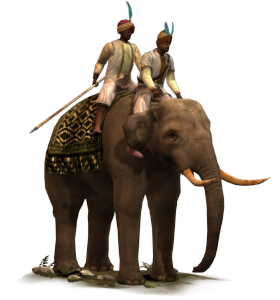Difference between revisions of "War Elephants (ETW Unit)"
| Line 9: | Line 9: | ||
Army Board | Army Board | ||
Army Staff College | Army Staff College | ||
| − | Prestige France Arc de Triomphe | + | |
| + | Prestige France Arc de Triomphe | ||
| + | |||
Prestige Maratha Ajinkyatara | Prestige Maratha Ajinkyatara | ||
| + | |||
Prestige Poland Akademia | Prestige Poland Akademia | ||
| + | |||
Prestige Prussia Brandenburg Gate | Prestige Prussia Brandenburg Gate | ||
| + | |||
|Region= India | |Region= India | ||
|Recruitment Cost= 1230 | |Recruitment Cost= 1230 | ||
Revision as of 07:51, 3 March 2011
These troops ride into battle on the backs of elephants, beasts who very presence spreads terror throughout enemy ranks.
Overview
Like many animals, elephants can be trained to ignore the sights, smells and, above all, hellish noises of a battlefield. They can also be trained to fight, goring men with their tusks and trampling others underfoot. Elephants make superb platforms for men to fight from, giving them an automatic height benefit over many opponents.
There are risks to using elephants in warfare. They do panic, and if they stampede they will cause terrible damage to everyone, friends and foe alike. Indian elephants, however, are relatively tractable beasts, and there is a long history of using them as beasts of burden.
There is also a long history of using unusual animals in combat, from elephants to war dogs, and even seals and dolphins in more recent times. Elephants at least stand a chance of survival, unlike the Russian mine dogs of the Second World War, who were trained to look for their dinners under enemy tanks. This doesn't sound too bad, until you learn that the dogs were carrying explosive packs on their backs. Dinner time on the battlefield was always terminal for the dog and his target tank.
